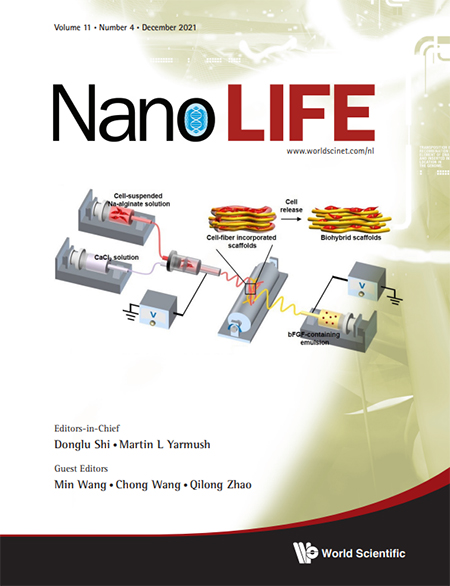Electrospinning and Electrospraying with Cells for Applications in Biomanufacturing
Abstract
Biomanufacturing of cell-laden scaffolds with biomimetic cell-scaffold organizations resembling the structures and anatomy of human body tissues and organs holds great promise in tissue engineering and regenerative medicine. In human body tissues and organs, specific types of cells are supported by nanofibrous extracellular matrix (ECM) in well-defined three-dimensional (3D) manners. Electrospinning is a facile and effective technique for producing nanofibrous scaffolds, which exhibit high similarities in the structure compared to ECM that offers structural and mechanical supports to cells in the human body. The incorporation within the electrospun nanofibrous scaffolds has therefore been considered as a promising approach for biomanufacturing of cell-laden scaffolds with tissue-mimicking structures. However, limited by low controllability of conventional cell seeding strategies and small sizes of interconnected pores of normal electrospun scaffolds, it is highly difficult to incorporate living cells within electrospun scaffolds on demand and results in cell-laden scaffolds with desirable 3D cell-scaffold organization. With recent advances in electrospinning and electrospraying with cells, it is visible to directly incorporate living cells within scaffolds via cell microencapsulation approaches and therefore offer promising alternatives for biomanufacturing of cell-laden scaffolds with tissue-mimicking structures. In this review, we will summarize the applications and challenges of cell seeding strategies and cell microencapsulation technologies for incorporating cells within electrospun scaffolds. Some techniques with high potentials to be integrated with electrospinning for forming the cell-laden scaffolds in continuous and noncontact manners, including aerodynamic-assisted cell microencapsulation, hydrodynamic-assisted cell microencapsulation and electrohydrodynamic-assisted cell microencapsulation (i.e., cell electrospinning and cell electrospraying), are highlighted. In particular, the cell microencapsulation and the subsequent formation of cell-laden scaffolds directly by electrospinning and electrospraying with living cells are overviewed in a detailed manner. Finally, the perspective and challenges of electrospinning and electrospraying with cells for biomanufacturing of cell-laden scaffolds with tissue-mimicking structures are discussed.


